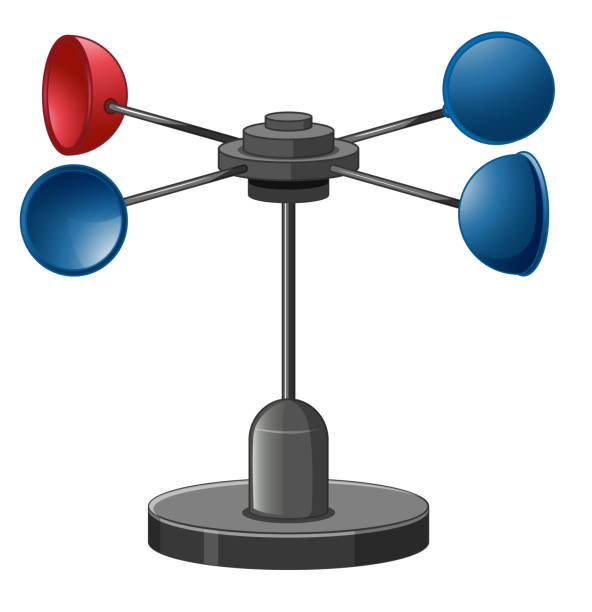Professional Tips for Calibrating Your Anemometer for Optimal Performance
Professional Tips for Calibrating Your Anemometer for Optimal Performance
Blog Article
All You Need to Know About Anemometers: Just How They Function, Why They Issue, and Where to Make use of Them
Anemometers, however usually forgotten in the realm of clinical tools, play an essential role in various fields, supplying important understandings into wind speed and air movement patterns. Comprehending the technicians behind these gadgets is important for anyone looking for to harness the power of this information. From meteorologists tracking weather condition patterns to engineers developing structures with wind tons in mind, the applications of anemometers are varied and far-reaching. As we explore the complexities of anemometer technology, we will reveal the internal operations of these gadgets, their value, and the essential factors to consider when picking the ideal anemometer for details applications.

Anemometer Essentials
An essential instrument utilized to gauge wind speed and direction, the anemometer plays an essential duty in weather forecasting and numerous markets. An anemometer normally contains three or 4 mugs that turn in the wind, a vane that aims right into the wind, and sensing units to track the motions or rotations. By calculating the turnings or motions over a specific amount of time, the anemometer can determine wind rate. The vane helps establish wind instructions by pointing right into the wind, supplying valuable information for weather condition forecasting, aeronautics, maritime procedures, ecological monitoring, and wind power applications.
There are various types of anemometers readily available, including cup anemometers, vane anemometers, hot-wire anemometers, and sonic anemometers, each with its special attributes and applications. Mug anemometers are frequently used for fundamental wind rate dimensions, while vane anemometers are preferred for directional measurements.
Principles of Anemometer Procedure
Building on the foundational understanding of anemometer fundamentals, the principles of anemometer operation elucidate the auto mechanics behind wind rate and instructions measurements. Mug anemometers, for instance, have three or even more mugs that record the wind, triggering them to rotate faster as the wind speed increases. Hot-wire anemometers rely on a warmed wire that cools down as wind passes over it, with the rate of cooling down determining the wind speed.
Significance of Anemometers
Anemometers play a vital role in measuring wind speed and instructions, providing vital information for weather forecasting, environment researches, ecological monitoring, and aviation operations. Meteorologists depend on anemometers to gather accurate wind data, assisting them comprehend climate patterns, forecast tornados, and issue timely warnings to the public. Wind farm operators utilize anemometers to analyze wind conditions and optimize power manufacturing from wind turbines.
Applications Across Different Industries
In the renewable power sector, anemometers my explanation play a crucial function in examining wind problems for wind ranch placements, ensuring ideal energy production. Industries like building and mining use anemometers to check wind speeds, vital for safety protocols, particularly when functioning at heights or in open-pit mines where strong winds can posture risks. In agriculture, anemometers help farmers in managing crop splashing by providing real-time information on wind rate to avoid drift.

Choosing the Right Anemometer for Your Requirements
For websites basic functions, a cup anemometer is ideal for measuring wind rate, while a vane anemometer provides wind direction data. Hot-wire anemometers are ideal for low airspeed measurements, and ultrasonic anemometers provide high accuracy and toughness.

Verdict
In conclusion, anemometers play a critical duty in determining wind rate and instructions throughout numerous sectors. It is vital to think about the value of anemometers in order to make informed choices when choosing the most suitable device for measuring wind problems.
There are numerous kinds of anemometers available, including cup anemometers, vane anemometers, hot-wire anemometers, and sonic anemometers, each with its special attributes and applications. Mug anemometers are frequently made use of for fundamental wind speed dimensions, while vane anemometers are chosen for directional measurements. Hot-wire anemometers are appropriate for reduced airspeeds, and sonic anemometers are suitable for high-precision dimensions in research and industrial settings.Structure on the fundamental understanding of anemometer essentials, the concepts of anemometer procedure illuminate the mechanics behind wind rate and direction measurements. For general objectives, a cup anemometer is appropriate for measuring wind speed, while a vane anemometer offers wind instructions data.
Report this page